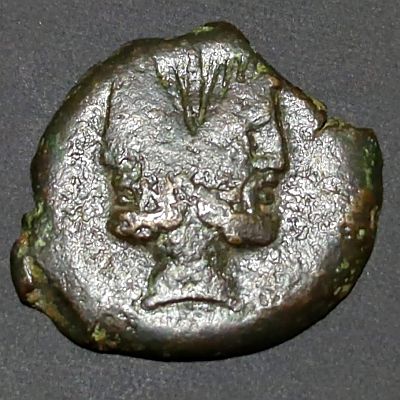Tag: God
-

133B.C. – 14A.D. Lydia 21 Æ
A 2,000 year old coin from one of the oldest coin producing places on Earth Map of Lydia from Britannica.com Lydia Founded as early as 1200 B.C. near the end of the Hittite period, Lydia, was a prosperous ancient Kingdom. Sardis was the capital of the kingdom from at least the mid-7th century B.C. The…
-

Kushan Empire Tetradrachm 127-150 AD
A hard to define Indo-European culture The Yuezhi were a loose confederation of Indo-European people who had been living in northwestern China until they were driven west by another group, the Xiongnu, in 176–160 B.C, reaching Bactria (northwest Afghanistan and Tajikistan) around 135 B.C. They had learned to use a form of the Greek alphabet, and struck…
-

Gela Æ Tetras 420-405 BC
An ancient Greek river god. Gela, a city on the southern coast of the Italian island of Sicily, was founded in 698 by Greek colonists from Rhodes and Crete. The name comes from the Sicilian-dialect word for “winter frost”. This coin features “Gelas”, a local river god. Each river had its own god. Looking at…
-

Roman Republic Aes Grave (Janus & Ship’s prow)
Like many Roman pieces today, (or at least the ones I can afford), here is a coin which looks a bit rough, but has a lot of history. It is a later example of one of the earliest types of Roman coins. It even has a connection to Pompeii. Although not great seafarers, Rome did…

